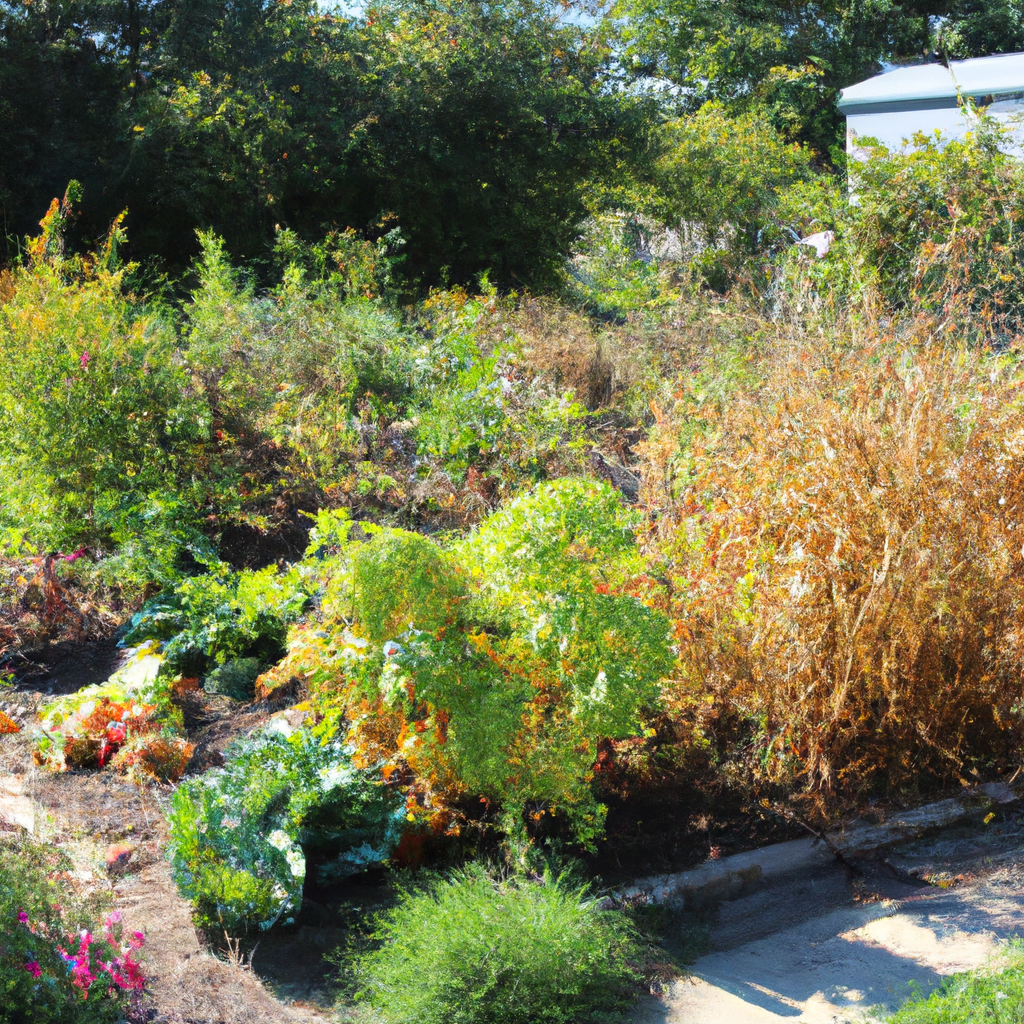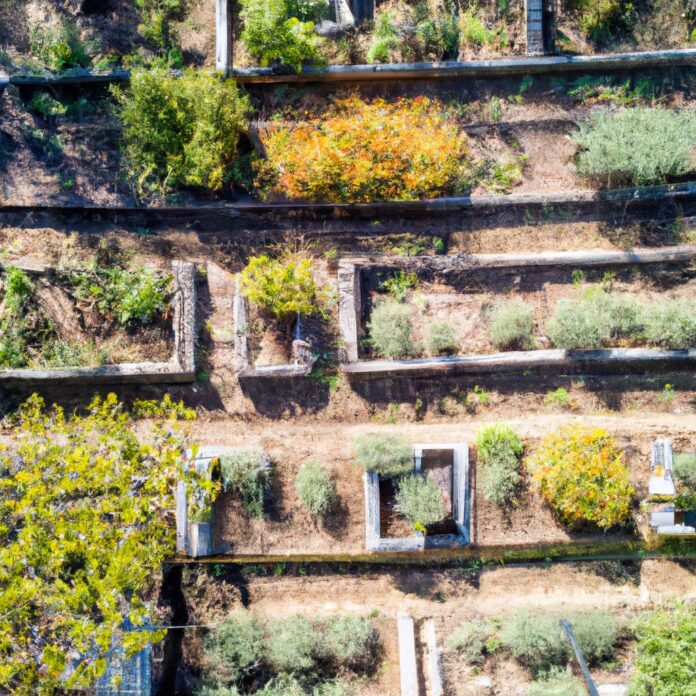As the hustle and bustle of city life perpetually evolves, introducing community gardens is a unique way to foster a culture of environmental stewardship and civic engagement within urban areas. Community gardens provide a much-needed respite from the asphalt and concrete of modern cities, turning abandoned lots into vibrant, green spaces for cultivation. For city-dwellers, these new pockets of green provide a place to connect with nature, engage in meaningful conversations, and grow their own local produce. Read on to discover the many benefits of introducing community gardens to urban areas.
1. “Reclaiming Concrete Jungles: The Rise of Community Gardens in Urban Landscapes”
Urban community gardens are on the rise, sprouting up in cities nationally and internationally to enrich and improve the lives of people in cities. With limited space, these public patches of paradise bring community members together to grow food and to foster a sense of community.
What once were dull concrete jungles are now havens from the hustle and bustle of the urban life. In these teeming cities, they offer invaluable lessons of working together and the simple pleasure of tilling the soil. Now, community gardens breathe a little more life into the city and provide much needed connecting points for the urban dweller.
- The Benefits of Community Gardening
The advantages of community gardens are far-reaching. Not only are they aesthetically pleasing, they also provide fresh fruits and vegetables into the diets of those who otherwise might not have access to them. Community gardens help to reduce air pollution, serve as a respite from the busyness of the city, increases community pride, and gives gardeners more control over their food sources.
A Chance to Educate and Grow
Community gardens also serve as gathering places where people can learn gardening techniques and share knowledge of all types of plants. They can also serve as meeting grounds for workshops in environmental stewardship and reconnect city-dwellers to the land. There are often garden walks that take place to give greater insight into the operations of mutual gardens.
The rise of community gardens in the urban landscape has offered countless opportunities and a unique chance to design a better life for those living in the city. As urban gardens become ever-more prevalent, diverse, and resilient, it will be exciting to watch how the future unfolds.
2. “Seeds of Connection: Uniting Urban Dwellers through Community Gardens”
Community gardens are spaces that bring people together, connecting people in cities across the world. They are places for individuals to come together, to grow food, build relationships, make friendships, and exchange knowledge. They offer a unique opportunity to create a more sustainable and equitable urban environment.
Anyone can become part of a community garden. They are open-access and welcome people from all backgrounds. No matter your race, gender, or socioeconomic status, anyone who wants to participate can join. This type of public space creates safe areas where people can come together and share in collective experiences.
In the garden, community members can grow food, build structures, and create beautiful, artistic projects. Gardening has many mental and physical benefits as well, such as stress relief, physical activity, and improved mental well-being. Gardening also reduces the need for expensive foods from grocery stores. Community gardens can provide a steady stream of fresh, locally-grown produce.
Community gardens also provide access to a new group of people and can bring cultures together. Working together to plan, build, and maintain a garden allows opportunity for cultural exchange and mutual respect. It may also lead to changes in behavior, such as increased environmental awareness. Participants learn more about nutrition, cooking, and sustainable practices. The seed of connection is planted when people come together and share in communal effort.
Benefits of community gardens:
- Safe place for community members to connect
- Reduces need for expensive store-bought food
- Respects cultural differences
- Provides mental and physical health benefits
- Raises environmental awareness
For centuries, community gardens have been uniting urban dwellers. By creating these spaces and providing meaningful experiences, these gardens have been able to foster a sense of community and inclusivity in cities.
3. “Blooming Oases: Nurturing Urban Green Spaces for a Sustainable Future”
A city is made up of more than just busy streets and tall buildings. A key aspect of urban life is its green spaces – gardens, parks, and community areas – all essential for the wellbeing of its citizens.
Green Space Variety
There are many opportunities for urban green spaces. Historic parks add richness to the culture and vibrancy to city life. These are often expansive outdoor spaces, with trees and plants for citizens to enjoy. In smaller areas, such as plazas and squares, there may be planters, flower beds, and shrubs. Green roofs, such as those on top of commercial buildings, are also spreading rapidly around cities.
Green Spaces for Wellbeing
Urban green spaces offer both psychological and physical benefits. Being around greenery reduces stress, while regular outdoor activities can improve physical health. Studies have also shown increased productivity for workers who have access to green spaces.
Creating Greener Spaces
To increase city green spaces, here are some simple yet effective ways to start:
- Encourage more people to use existing green spaces, and help promote their benefits.
- Make green spaces accessible to all, including those with mobility impairments.
- Create more small-scale parks, such as pocket parks, for local communities.
- Educate the public on the importance of urban green spaces; and products or techniques that can be used to help create them.
Finally, urban development should strive to integrate more urban green spaces into its plans for the future. By making urban green spaces a cornerstone of city development, cities can open up the opportunity to create a sustainable future.
4. “Cultivating Hope: The Transformative Power of Community Gardens in Urban Environments
There are few experiences as rewarding as growing one’s own food and admirers its fruits. It may surprise urban dwellers that there are several ways to embrace the joy of gardening right in the heart of their own city, such as community gardens. Growing one’s own food is not only an enjoyable experience, but it also poses countless mental, physical and environmental benefits.
Community gardens can bring hope into urban environments, providing a start for local residents in their urban farming journey. They are spaces where users gain important skills, such as building community, understanding and gaining knowledge about sustainable agriculture, and developing their own yard or balcony garden.
These gardens face remarkable transformations, from neglected patches of dirt into flourishing centers of ecological diversity. Thus, they provide both environmental and mental sanctuary for local residents, allowing them to interact with other people who share their interests.
Community gardens have an immense educational role in providing an opportunity for city natives to explore multiple aspects of the land, such as:
- Understanding soil characteristics, such as the depth, texture, chemical composition, and drainage capacities.
- Learning principles of organic farming, such as choosing sustainable methods for producing healthy crops without the use of synthetic fertilizers or pesticides.
- Appreciating gardening as a form of healing that connects with nature and inner peace.
Growing in communal settings has a tremendous beneficial effect on people, encouraging healthy behavior, interacting and building networks, creating a sense of ownership and belonging among plants and trees. The process of keeping these gardens alive stimulates conversations that celebrate the beauty of nature and social solidarity.
Behind each community garden, there’s an incredible story. We all have the opportunity to nourish and nurture them. When we turn a barren place into a paradise of species of plants, their vivid colors and fragrance, we spread hope, happiness, and vibrancy into our cities.
Standing in the sun, breathing in the scent of freshly turned soil and gazing around at their hard-earned work, the proud gardeners of the community garden take a moment to appreciate their efforts. Together, they have harnessed the power of urban green spaces to bring fresh, organic produce to their neighborhood while cultivating a greater sense of community. This green space will continue to nourish and bind their community for years to come.



